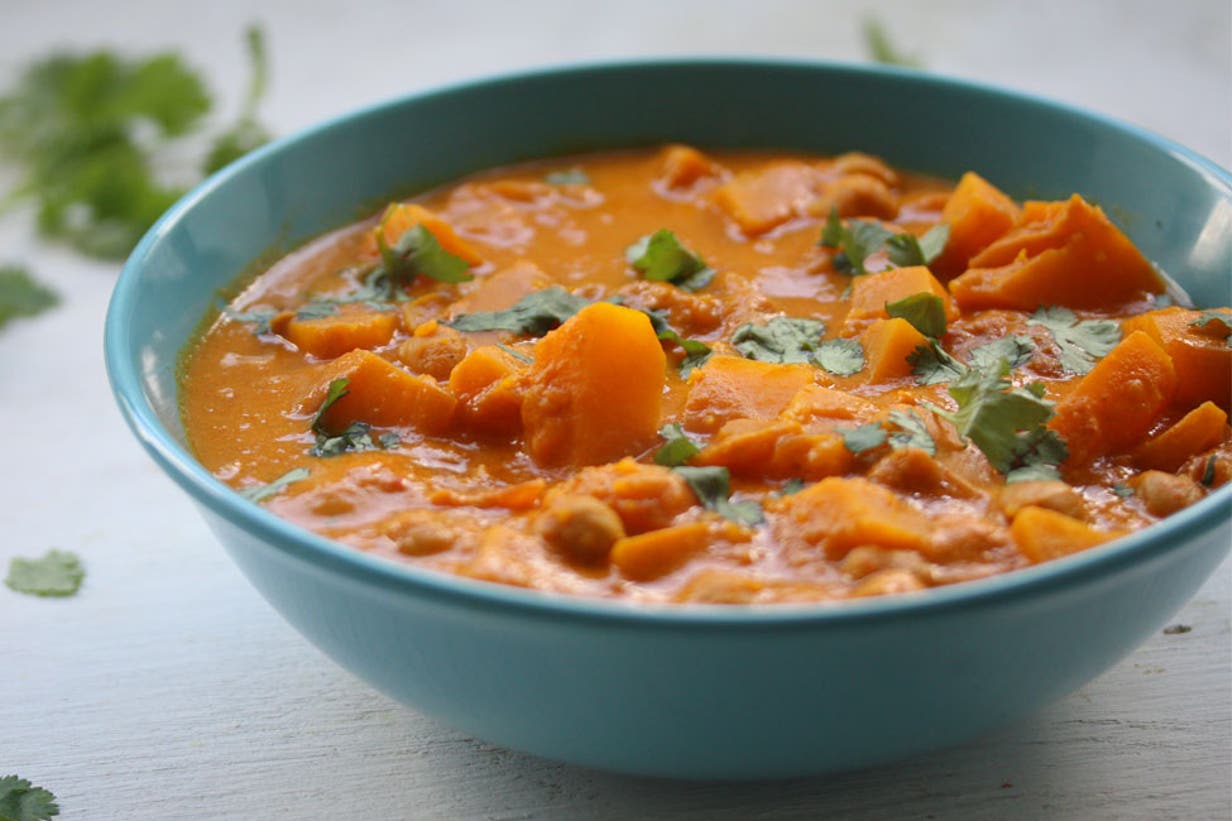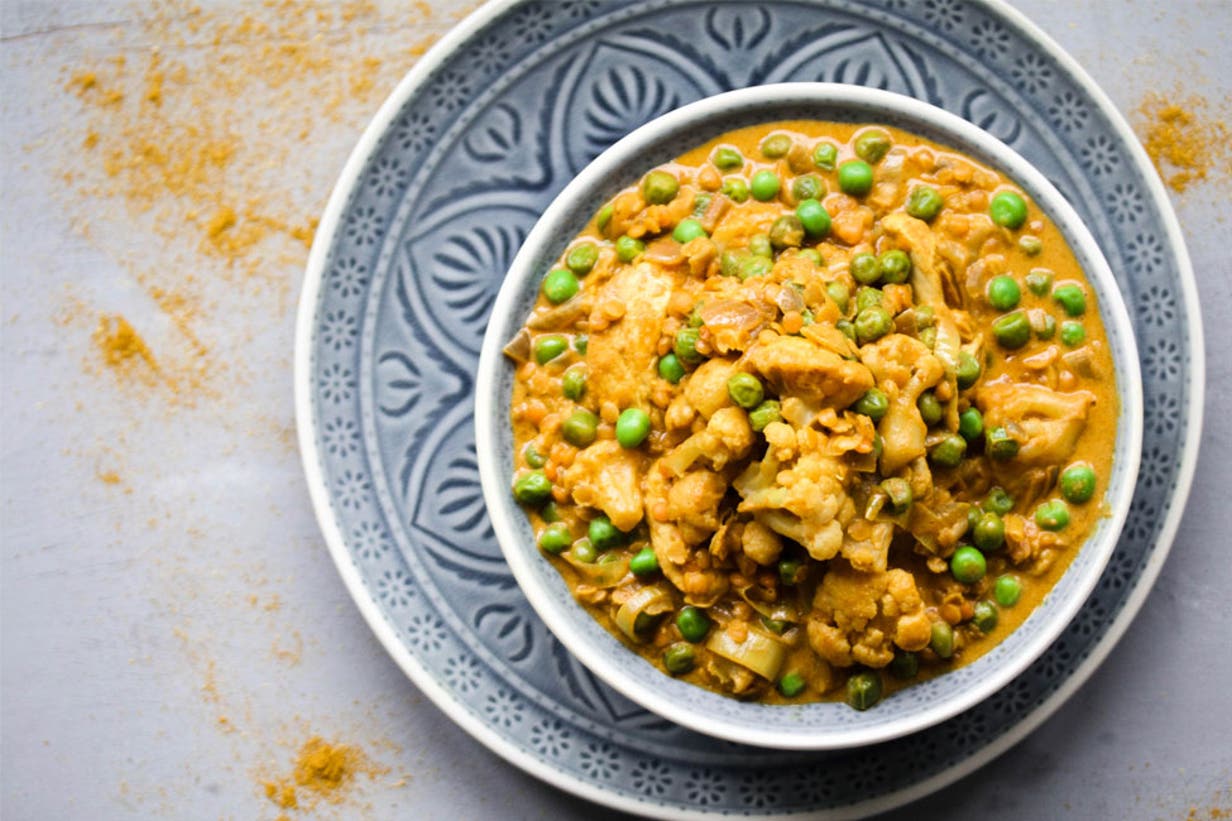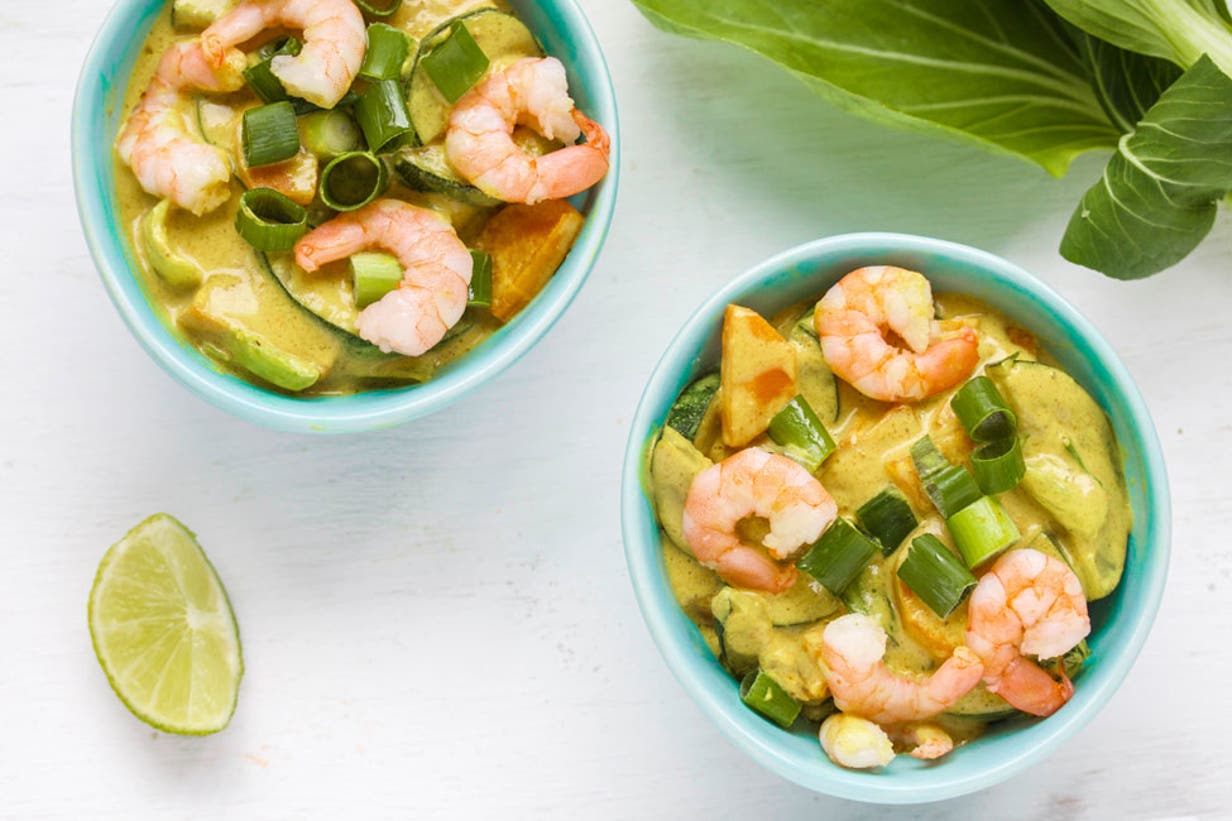Chickpea Curry with Pumpkin
A recipe full of warming, fruity flavours perfect for colder autumn days. Plus, it’s extremely easy to prepare: just place everything in a pot, wait 30 minutes and enjoy. And even better, no restrictions: chickpeas can also be swapped with beans or lentils if preferred.
Why is it healthy? Pumpkin is quite low in calories and high in fibre, vitamins and minerals. Low-fat coconut milk makes the curry as creamy as the full-fat version, but without the additional calories.

Ingredients:
- 250g squash or pumpkin (hokkaido, butternut, muscat etc.)
- 100g cooked chickpeas
- 100g chopped tomatoes (canned)
- 200ml low-fat coconut milk
- 10g minced ginger
- 1/2 tsp curry powder
- 1 pinch chili
- 1/4 bunch fresh coriander
Instructions:
- Peel and cut pumpkin into cubes of 1/2 inch.
- Heat chopped tomatoes and coconut milk in a pot. Add pumpkin, chickpeas, ginger and curry and bring to a boil. Then, reduce heat to low and simmer for approx. 30 minutes. Stir occasionally.
- Serve sprinkled with chopped coriander.
Optional: Season with low-sodium soy sauce.
Chicken Curry with Vegetables
This chicken curry offers lots of different vegetables, plus protein and aromatic spices which boost thermogenesis. The powerful mix of plant and animal protein complement each other in a burst of flavours.
Why is it healthy? By using coconut oil instead of butter and packing in additional veggies to make it higher in fibre, vitamins and minerals, this curry offers less calories and more nutritional value than most.

Ingredients:
- 200g boneless chicken breast
- 150g cauliflower (fresh or frozen)
- 1/2 red onion
- 50g red lentils
- 35g leek
- 50g peas (fresh or frozen)
- 150ml low-fat coconut milk
- 150ml water
- 2 tsp curry powder
- 1 tsp cayenne pepper
- 1 tsp coconut oil
Instructions:
- Cut chicken into strips, chop cauliflower and onion, cut leek into slices.
- Heat coconut oil in a pot. Over medium heat, stir-fry chicken and onion for approx. 5 minutes. Add cauliflower, lentils, leek, peas, curry powder and cayenne pepper and stir-fry for another 2 minutes.
- Add coconut milk and water, bring to a boil, then reduce heat to low and let simmer for approx. 15 minutes. Stir occasionally.
Optional: season with unrefined salt and black pepper.
Shrimp Curry
No chicken, no problem – this curry is still super high in protein. It’s creamy, flavourful, slightly spicy and only takes 20 minutes. Fast food, home-made and much healthier than your local takeaway.
Why is it healthy? The vegetables are only cooked for a short amount of time, so they don’t lose too many of their micronutrients. Apart from keeping more of their vitamins, they are also still quite firm, making you chew more and therefore eating it slower, which can help combat over-eating.

Ingredients:
- 150g shrimps or prawns (cooked and peeled)
- 1/2 courgette
- 2 carrots
- 1 baby bok choy
- 50g fresh spinach
- 1 spring onion
- 10g ginger
- 150ml low-fat coconut milk
- 1 tsp curry powder
- 1 pinch chili
- 1 tsp coconut oil
- 1/2 lime
Instructions:
- Roughly chop courgette, carrots, bok choy, spring onion and ginger.
- In a pot, heat coconut oil. Stir-fry courgette, carrots and ginger for approx. 5 minutes on medium heat.
- To the pot, add coconut milk, curry powder and chili flakes. Bring to a boil then reduce heat to medium and let simmer for approx. 15 minutes. Add bok choy and let simmer for another 5 minutes.
- Serve topped with shrimp and spring onion. Season with lime juice, soy sauce and pepper to taste.
What’s so special about curry?
Curries offer endless diversity. When we mention curry, we’re not really talking about a specific recipe, but more a culinary concept. You can use all kinds of vegetables, meat, fish, seafood and even fruits in a curry. Everything goes well together in this dish. You can also adapt every curry to your individual taste, whether you like it mild and creamy or spicy and simple – or something in between. Top it with nuts, fruit, seeds or herbs, or everything combined for that extra burst of flavour. There is literally a curry for everyone and every situation. Have a look in our nutrition app to find even more colourful fall recipes.